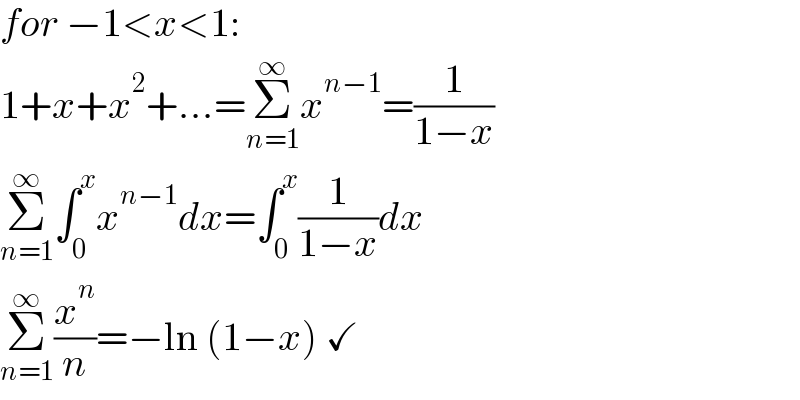
Question and Answers Forum
Question Number 181570 by SANOGO last updated on 26/Nov/22
![prove that:xε]−1,1[ Σ_(n=1) ^(+oo) (x^n /n)=−ln(1−x)](Q181570.png)
Answered by mr W last updated on 27/Nov/22

Commented by SANOGO last updated on 27/Nov/22

| ||
Question and Answers Forum | ||
Question Number 181570 by SANOGO last updated on 26/Nov/22 | ||
![prove that:xε]−1,1[ Σ_(n=1) ^(+oo) (x^n /n)=−ln(1−x)](Q181570.png) | ||
Answered by mr W last updated on 27/Nov/22 | ||
 | ||
| ||
Commented by SANOGO last updated on 27/Nov/22 | ||
 | ||